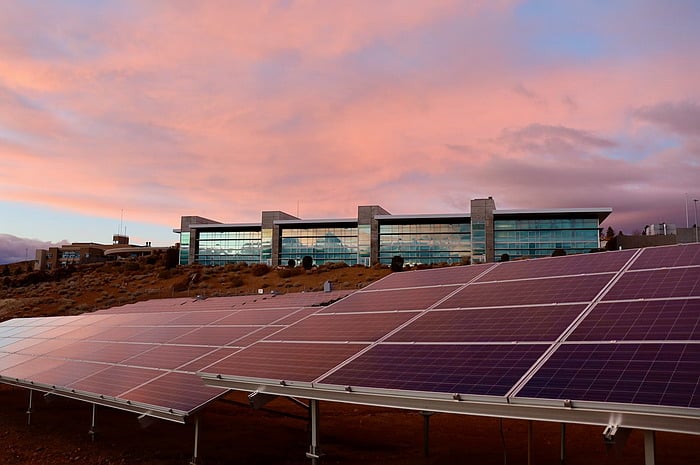Illuminating the Path to Sustainable Energy

Solar cells, often referred to as photovoltaic cells, are the unsung heroes of our renewable energy landscape. But how do solar cells work, and what’s the science behind this green energy revolution? In this illuminating exploration, we delve into the inner workings of solar cells, from the moment sunlight touches the surface to the generation of clean electricity.
1. The Essence of Solar Cells
At their core, solar cells are semiconductors designed to convert sunlight into electricity. This phenomenon is made possible through a remarkable property of certain materials – the photovoltaic effect.
2. Capturing Sunlight
The journey of electricity generation begins with the solar cell’s photovoltaic material. When sunlight, composed of tiny packets of energy called photons, hits this material, it energizes the electrons within, causing them to become ‘excited.’
3. The Role of Semiconductors
Semiconductors, typically made from silicon, serve as the photovoltaic material in most solar cells. When photons collide with these semiconductors, they provide enough energy to release electrons from their normal positions, creating an electric current.
4. Electron Movement
The ‘excited’ electrons are then guided by the internal structure of the solar cell. An electric field is created within the semiconductor to ensure that the electrons flow in a specific direction, forming an electric current.
5. The Creation of Electricity
As the electrons flow through the material, they move to an electrical circuit connected to the solar cell. This movement of electrons generates an electric current, which can then be harnessed and utilized as electricity.
6. Direct Current (DC)
The electricity produced by a solar cell is in the form of direct current (DC). This type of electricity flows in a single direction and is the same kind of electricity used by batteries. However, most of our household devices and the grid operate on alternating current (AC).
7. Inverters
To make the electricity usable for our homes and industries, solar systems are equipped with inverters. These devices convert the DC electricity produced by solar cells into AC electricity, which is compatible with our appliances and the grid.
8. Photons to Electricity
The entire process, from the moment sunlight’s photons hit the solar cell to the generation of electricity, is a demonstration of the photovoltaic effect. This effect is the fundamental principle behind solar power.
9. Solar Panel Arrays
Individual solar cells are often grouped together into solar panels, which, in turn, are combined into large arrays. These arrays can be installed on rooftops, in solar farms, or integrated into various structures and devices.
10. Tracking the Sun
To maximize electricity generation, solar panels can be equipped with tracking systems that follow the sun’s path throughout the day. This ensures that the panels are always exposed to the most direct sunlight.

Solar panels with more efficient solar installed on the roof, image source: Unsplash
11. Storage Solutions
One of the challenges of solar energy is that it’s intermittent – the sun doesn’t shine at night or during cloudy days. To address this, energy storage solutions, like batteries, can store excess electricity generated during sunny periods for later use.
12. Environmental Benefits
Solar energy is celebrated for its environmental advantages. It produces no greenhouse gas emissions, conserves water resources, and contributes to reducing air pollution.
13. Solar Innovation
Solar cell technology continues to evolve. Advances in materials, design, and manufacturing are making solar panels more efficient and cost-effective.
14. Solar Integration
Solar power is becoming an integral part of our energy mix, with an increasing number of homes, businesses, and utilities relying on solar energy to meet their electricity needs.
15. Solar Energy and Sustainable Living
Solar cells are not just a technological marvel; they are a catalyst for sustainable living. Homeowners and businesses are increasingly turning to solar power to reduce their environmental footprint and lower their electricity bills. Solar energy empowers individuals to take control of their energy consumption and contribute to a cleaner planet.
16. Solar Panels and Aesthetic Integration
The design of solar panels has evolved to become more versatile and aesthetically pleasing. Solar cells can now be seamlessly integrated into building structures, enhancing the architectural appeal of homes and commercial buildings.
17. Remote and Off-Grid Applications
Solar cells are instrumental in providing electricity to remote and off-grid locations where traditional power sources are impractical. Solar-powered water pumps, communication towers, and rural electrification projects are helping to improve the quality of life in underserved areas.
18. Energy Independence
One of the key advantages of solar energy is the potential for energy independence. By generating their own electricity, individuals and businesses can reduce their reliance on centralized power grids and have a backup source of power during grid outages.
19. Environmental Considerations
While solar energy is clean and renewable, the production and disposal of solar panels have environmental considerations. Recycling and responsible disposal of solar panels are essential to minimize their environmental impact.
20. The Future of Solar Power
As solar technology continues to advance, the future looks promising. Innovations in materials, such as perovskite solar cells, hold the potential to further increase the efficiency and affordability of solar panels. The integration of solar power into transportation, agriculture, and space exploration is also on the horizon.

Highly efficient solar cells based on perovskites, image source: YouTube
21. Global Solar Trends
The use of solar cells is on a remarkable upward trajectory worldwide. As countries strive to reduce their reliance on fossil fuels and combat climate change, solar energy installations are increasing rapidly. The falling costs of solar panels are a significant driver of this growth.
22. Solar in Space
Solar cells are not just confined to Earth; they play a pivotal role in space exploration. Solar panels on spacecraft and satellites capture sunlight in the vacuum of space, providing the necessary energy for missions to the moon, Mars, and beyond.
23. Community Solar Projects
Not everyone can install solar panels on their property. Community solar projects address this challenge by allowing individuals to invest in shared solar installations, benefiting from solar energy even if they can’t have panels on their rooftops.
24. Education and Research
The science and technology behind solar cells continue to be a focus of education and research. Universities and research institutions worldwide are dedicated to improving solar efficiency, exploring new materials, and expanding our understanding of photovoltaic systems.
25. Empowering a Sustainable Future
The impact of solar cells extends far beyond electricity generation. It is a symbol of our commitment to sustainable living, renewable energy, and a cleaner planet. Solar power is not just a technology; it’s a movement that empowers individuals and nations to be part of a more sustainable future.
Conclusion: The Dawn of a Solar-Powered Era
Understanding how solar cells work unravels the beauty and potential of harnessing the sun’s energy to meet our electricity needs. The science behind solar power is at the heart of a global movement toward cleaner, more sustainable energy sources. As we embrace the power of the sun, we are taking a significant step toward a future where our energy is not only abundant but also environmentally responsible, providing a beacon of hope for a greener, more sustainable world.





